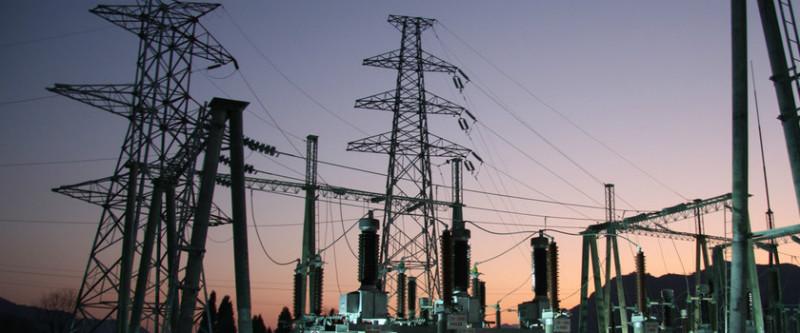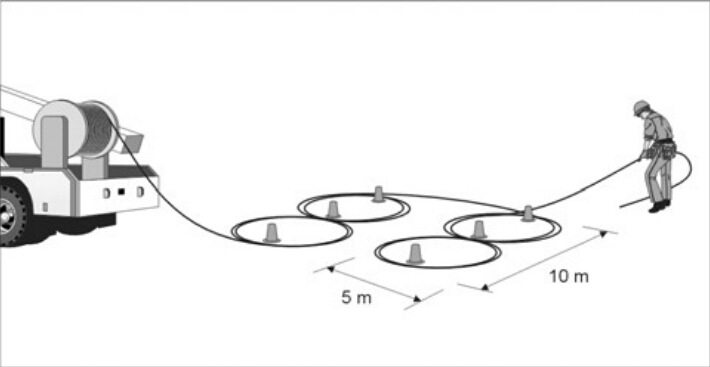ADSS optical cable, short for all dielectric self-supporting cable, is a type of optical fiber that is strong enough to support itself between structures without using conductive metal elements. Designed with excellent tensile and crush performance that impervious to ice, wind, moisture, corrosion and electromagnetic interference (EMI), it is recommended for harsher environments, aerial or direct burial applications near high-voltage power distribution lines. Regarding the complexity and significance of ADSS optical cable installation, we typically offer some practical information from two aspects: general installation methods and safety considerations.

ADSS Optical Cable Installation Methods
Let’s start this section with the principal question: how to efficiently install ADSS optical cable? Generally, there are two primary methods used for installing ADSS optical cable. The first method is called the stationary reel, or the “Stationary Reel Method,” and the second is called the moving reel, or the “Drive-off Method.”
ADSS Installation with Drive-off Method
The drive-off method (the moving reel) is the simplest way to install ADSS optical cable. This method of cable placement is primarily used during the construction of new lines where there is a clear right-of-way and with no obstructions to vehicles. Here we offer some tips for installing ADSS optical cable with this method.

1. Attach the cable to pole-line hardware at the first pole of the cable run. Leave enough excess cable to facilitate splicing. The cable should be able to reach the ground, enter a splicing trailer/truck and be placed in an enclosure.
2. For the cable length, always leave more rather than less. Cap the open cable end to prevent contamination from dirt or moisture. Coil the cable being careful not to exceed the minimum bend radius and tie the loop to the top of the pole.
3. Ground and bond the armor at the first pole. The armor is contacted by means of a clamp (sometimes called “shark jaws”) that pierces the jacket to reach the armor.
4. Cable blocks should be installed at all poles not framed in dead-end hardware configurations. Pay the cable off the top of the reel and manually place it into the cable block. Continue to pay-off the cable slowly and uniformly to keep the pulling tension even.
5. Lift the cable from the cable blocks and place it into the suspension clamp once the cable route has been tensioned as required. Tension the cable wherever there are dead end hardware configurations. Ground and bond the armor at these locations once the cable is tensioned.
ADSS Installation with Stationary Reel Method
The stationary reel method typically contains three steps, which are explained below for your reference.
Step One: Trailer Set-Up
The trailer should be positioned in-line with the strand and twice the distance of the set-up chute to the ground from the chute. This prevents the cable from rubbing on the pole (or reel) or binding on the chute. If the trailer cannot be positioned there, move the set-up chute and cable trailer to an adjacent pole.
The cable should pay-off the top of the cable reel. The pay-off of the cable from the reel should cause a downward force at the hitch of the trailer.
Chock the trailer wheels. Adjust the reel brakes as needed. Place protective barriers and cones as needed to protect pedestrians.

Step Two: Pulling Set-Up
Attach the correct-sized cable grip. Then attach a swivel and a pulling line to the grip. Attention should be given to the tension that is being placed on the cable. There is not a practical method to monitor the tension in the cable itself.
Step Three: Cable Block Placement
Use cable blocks designed to be attached directly to the pole hardware. Pull the cable out along the pole line and lift it into the cable blocks with a cable lifter or by hand from a bucket truck.
Safety Considerations for ADSS Optical Cable Installation
Along with the right installation methods for ADSS optical cable, there is another factor that we can never neglect: safety. For each and every cable installer, especially those work for outside plant construction, personal safety is always prior to all. Hence, in this section let’s discuss some basic safety precautions applicable to ADSS optical cable installations.
Point One: Use protective leather gloves when climbing or descending a pole, and when working with sharp instruments. Wear rubber gloves when working near exposed electrical circuits.
Point Two: Use a safety harness on all bucket trunks and aerial lifts. A body belt and safety strap for the bucket or platform must be used when the equipment is in operation to minimize the chance of injury.
Point Three: Carefully inspect the cable reels for any imperfections that might cause damage to the cable. A “figure-eight” configuration should be used when the cable is removed from the reel and piled on the ground. Remember to protect cable with barricades or cones when placing it on pavement or other surfaces.

Point Four: The transmission characteristics of ADSS optical cable can be degraded when subject to excessive pulling force, sharp bends and crushing forces. So keep the maximum pulling tension and span tension in mind, as well as the minimum bend radius.
Point Five: Temporary or permanent guys should be installed at any location where the self-supporting cable is tensioned, in order to avoid placing an unbalanced load on the support poles.
Conclusion
ADSS optical cable installation can be rather complicated since it is partly influenced by local conditions and environments. Do remember to take your safety as a priority before working on the installation task. The methods described for installation of ADSS cable in this article are intended to be used as guidelines, moreover, the specific circumstances, existing engineering and customer requirements should as well be taken into account.

No comments:
Post a Comment